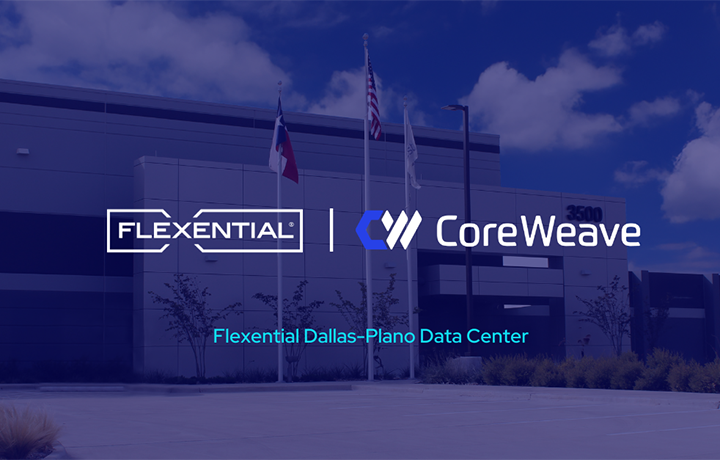Decoding the evolution of virtualization technologies
In our recent webinar, Next-level VMware strategies: Expert insights for success, James Ochoa, VP of Cloud Sales at Flexential, sat down with Naveen Chhabra, Principal Analyst at Forrester, to discuss the ever-evolving world of cloud technology. They covered essential topics such as market-driven virtualization alternatives, the impact of VMware's acquisition by Broadcom, and best practices for evolving your virtualization strategy. Here’s a recap of their discussion.

In today's dynamic technological landscape, virtualization technologies have emerged as a cornerstone for many organizations. Virtualization, the technique of creating a software-based replica of various resources like servers, desktops, storage devices, or network resources, is now deeply integrated into infrastructure spanning from proprietary hardware to standard X86 hardware. The adoption of virtualization brings a host of advantages, including amplified efficiency, cost reduction, and expedited speed to market. As the technological sphere progresses ceaselessly, the strategies and methodologies organizations use to capitalize on virtualization effectively need to adapt accordingly.
Understanding the shift in the virtualization landscape and its impact on businesses
Virtualization holds a critical role in organizations, being a deep-rooted technology utilized both on-premises and in the public cloud. As we gaze into the future, new methodologies and architectures like containers and serverless technologies are making their mark. These advancements are fueled by specific business needs and use cases, such as an e-commerce company requiring a scalable website to manage fluctuating traffic volumes. While virtualization can accommodate this, a container-based microservices infrastructure can rapidly scale up, meeting scalability needs and minimizing potential infrastructure scaling issues.
Significant shifts in the virtualization landscape have occurred due to the changing market situation. A prime example is the acquisition of VMware by Broadcom, leading to substantial alterations in VMware's business model. This includes a transition to subscription-based infrastructure and a cutback in the number of available packages, resulting in considerable price hikes for customers. Consequently, organizations are exploring alternatives, whether it's different on-premises virtualization, shifting to the public cloud with cloud-native virtualization, or modernizing with containers.
When mapping out your VMware options, Naveen Chhabra, Principal Analyst at Forrester Change, says, "Change is constant; change is painful, but it is a pain that also shows up late at the end of the tunnel. You can call it opportunity. The market is changing. There are many options available when you make a decision to move from one underlying technology to another. Think about the long-term impact of that because change should not be just for now, but how does it enable your organization to be ready for the next five to seven years? And you shouldn't be looking back at another migration in that time frame. So, think about the business outcomes and align your changes to what your business requirements are. It should not be a tech change for the sake of tech, but how does it enable a better business outcome."
Shifting focus: The challenges and benefits of broadening your portfolio
Transitioning from a virtualization or infrastructure focus to a wider portfolio can present complex scenarios. Striking the right balance between package inclusion and the degree of influence, control, partnership, and collaboration achievable with colleagues and leaders can be challenging. This process can be time-intensive and may result in time loss due to collaboration with individuals who lack mutual accountability. Despite these hurdles, the drive towards evolution is beneficial. It prompts dialogues among various teams within an organization, fostering a deeper comprehension of tool usage and the reasons behind it. This understanding can trigger a reevaluation of business requirements and the detection of any alterations or absences in these needs.
“Virtualization is improving efficiency, helping companies reduce overall costs, and so on. But if you look into the future, there are new methodologies and architectures that are becoming more prevalent. Companies must look into the business scenario they are serving, the use case, and how the technology is going to be deployed. These parameters collectively will define the platform of choice for the future.”
— Naveen Chhabra, Principal Analyst, Forrester
Key considerations for evolving virtualization strategies
- Evolving virtualization strategies: Virtualization strategies are continually evolving with developments in network and storage virtualization and new ways of developing applications such as containers or serverless. The choice of virtualization methodology should be based on the specific business scenario and use case, with speed of deployment being a key factor.
- Market-driven virtualization alternatives: Market changes, such as the acquisition of VMware by Broadcom and subsequent business model changes, have led to significant cost increases for customers. This has prompted many organizations to seek alternatives to their current virtualization strategies, including moving to the public cloud or modernizing their infrastructure with containers.
- Navigating partner network changes: Changes in the partner network of tech companies, with many companies significantly reducing their partner networks, can make it more difficult for customers to have their voices heard by product management executives. Despite these challenges, continuous innovation and leveraging the technology stack, people, and partner ecosystem are crucial to improving virtualization strategies.
- Technology evolution vs. transformation: The term "transformation" is misleading in the context of technology evolution, as it implies a choice, whereas "evolution" suggests a necessary adaptation to market factors, vendor factors, and customer demand. Access to multiple technologies and products via one package can be beneficial but also requires a balance between what is included in the package and the level of influence, control, partnership, and collaboration that can be achieved within an organization.
- Assessing vendor exposure: Assessing exposure to vendors and understanding the technologies and licenses an organization has is a crucial first step before considering alternative options. Understanding the dependencies of a potential alternative, including application requirements, IT operations, security, processes, and skills, is also important. Changes should be made with long-term impacts in mind and aligned with business outcomes.
Conclusion
The technological evolution and the shift towards a diverse product and technology portfolio present a mixed bag of challenges and opportunities. It is imperative for businesses to comprehend their existing vendor exposure, evaluate their business needs, and pinpoint suitable alternatives. Although this approach may be time-intensive and potentially expensive, it promises improved business outcomes and more efficient technology utilization. As highlighted in the webinar, the key to navigating this evolving landscape is to think long-term and align technology changes with business outcomes, ensuring that every step taken today paves the way for a future-ready organization.
For a deeper dive into the evolving virtualization landscape and to gain more expert insights, watch the full webinar, Next-level VMware strategies: Expert insights for success, now available on-demand. Don't miss this opportunity to learn from industry leaders and stay ahead in the rapidly changing technology landscape.






